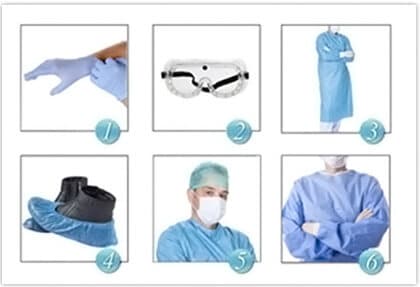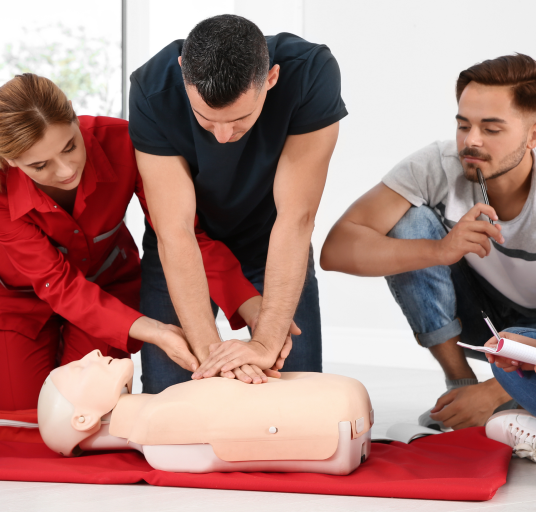Assessing the Situation Before Performing CPR : Chapter 2
It is important to always check the scene and ensure your safety first. Remember to stay alert so you can identify and assist with any medical emergency.
2020 Interim Guidance for suspected or confirmed COVID-19 patients: Put on PPE immediately & limit the personnel around you after you verify that the scene is safe.
It is critical to understand that dialing 9-1-1 is one of the most important steps you can take to save another’s life.
- Your safety is first, so leave the scene if you are at risk.
- While helping the victim, protect yourself from transmission of possible diseases.
- Use preventive breathing barriers / personal protective equipment when available.

PPE includes: Gloves, Goggles (eye protection), Gown, Lab Coat or Apron, Shoe Covers, Face Shields / Masks, and Cap
- Use disposable gloves to avoid direct contact with blood / bodily fluids. [View Tip]
- If you suspect that a victim has suffered a spinal or neck injury, do not move or shake the victim.
When preparing to perform CPR, keep in mind ECC’s Chain of Survival. These are the five crucial steps that should be performed in an emergency:
- Early recognition and activation of EMS
- Early CPR with an emphasis on compressions
- Rapid defibrillation
- Early advanced care
- Organized post-care



